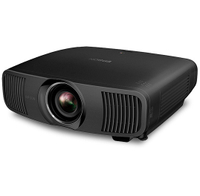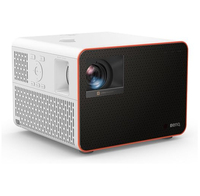TechRadar Verdict
You can get great visuals and an easy drop-in upgrade to a dedicated home theater with the BenQ W5800. But you won’t be getting a lot of the modern conveniences of projectors that are all-in-one solutions, and the diminishing returns of this premium product impact its value.
Pros
- +
Excellent picture quality
- +
Ample installation features
- +
Quiet operation
Cons
- -
Expensive
- -
No built-in speakers or streaming
- -
Brightness isn’t mind-blowing
Why you can trust TechRadar
BenQ W5800 projector: one-minute review
The BenQ W5800 provides a strong reminder that there’s nothing quite as dazzling as a home theater, especially one with a specialized projector, a screen that covers a full wall, cozy chairs, and a top-notch speaker setup. At $5,999 (£4,599, AU$8999), the W5800 is aimed at hardcore cinephiles who demand very few compromises on visuals and do not need on-board speakers or built-in smart TV platforms. To that end, the W5800 is a display and nothing else.
Make no mistake – the BenQ W5800 is a fantastic display. It provides hardware adjustments for image placement and sizing to make it easy to get a perfect image wherever the projector is set up. And as you'd expect from the best 4K projectors, it has a dazzling, color-rich picture that looks great with a broad variety of content. Many cheaper projectors offer automatic image adjustment, but they almost invariably do so by simply cropping or distorting the image digitally – compromises the BenQ W5800’s manual hardware adjustments avoid.
Still, the BenQ W5800 suffers from the diminishing returns of many a premium product. You can get brighter projectors for the price, but you might miss out on some of the professional setup flexibility found here. For example, an ultra short throw projectors like the Epson EpiQVision Ultra LS800 easily beat it when it comes to brightness, but they can be fussier to set up for a geometrically perfect image.
If you already have a big home theater that’s aching for a projector upgrade, the BenQ W5800 will be a fantastic option. But for most people, other, cheaper solutions should suffice.
BenQ W5800 projector review: price and release date
- Release date: May 2024
- MSRP: $5,999 (£4,599 / AU$8999)
The BenQ W5800 was launched in May 2024 at a starting price of $5,999 (£4,599 / AU$8999). Given the W5800’s premium status and relative newness, it’s unlikely to see major price changes anytime soon.
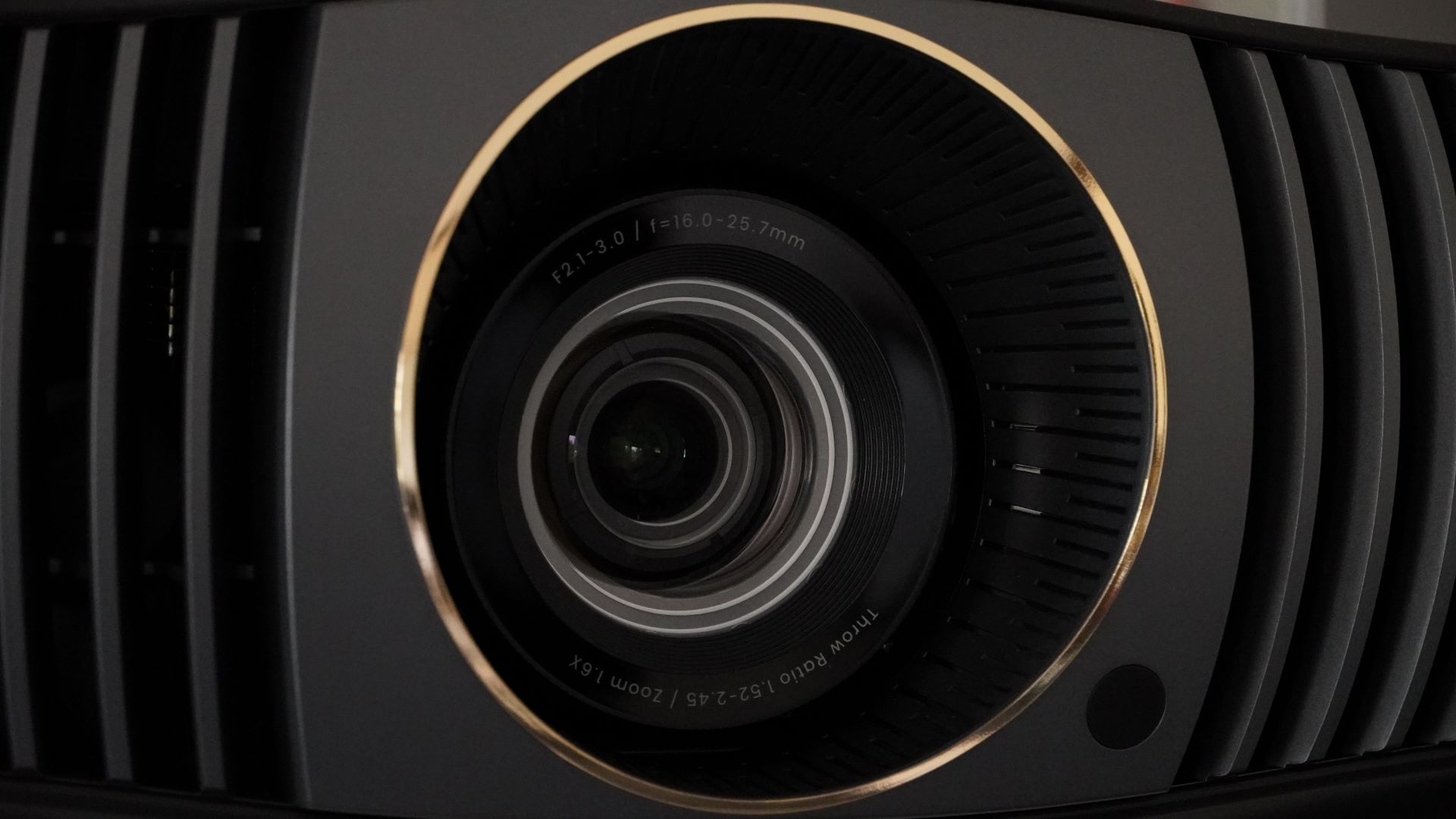
BenQ W5800 projector review: Specs
| Screen sizes supported: | up to 200 inches |
| Brightness (specified): | 2,600 lumens |
| HDR support: | HDR10+, HDR10, HLG |
| Display technology: | Laser, DLP |
| Smart TV: | N/A |
| Connections: | 2x HDMI, S/PDIF, 2x USB-A, 3D Sync out, LAN 100Mbps, USB-B (Service port), RS232 |
| Dimensions: | 20.7 x 5.7 x 15.4 inches |
| Weight: | 23.1 pounds |
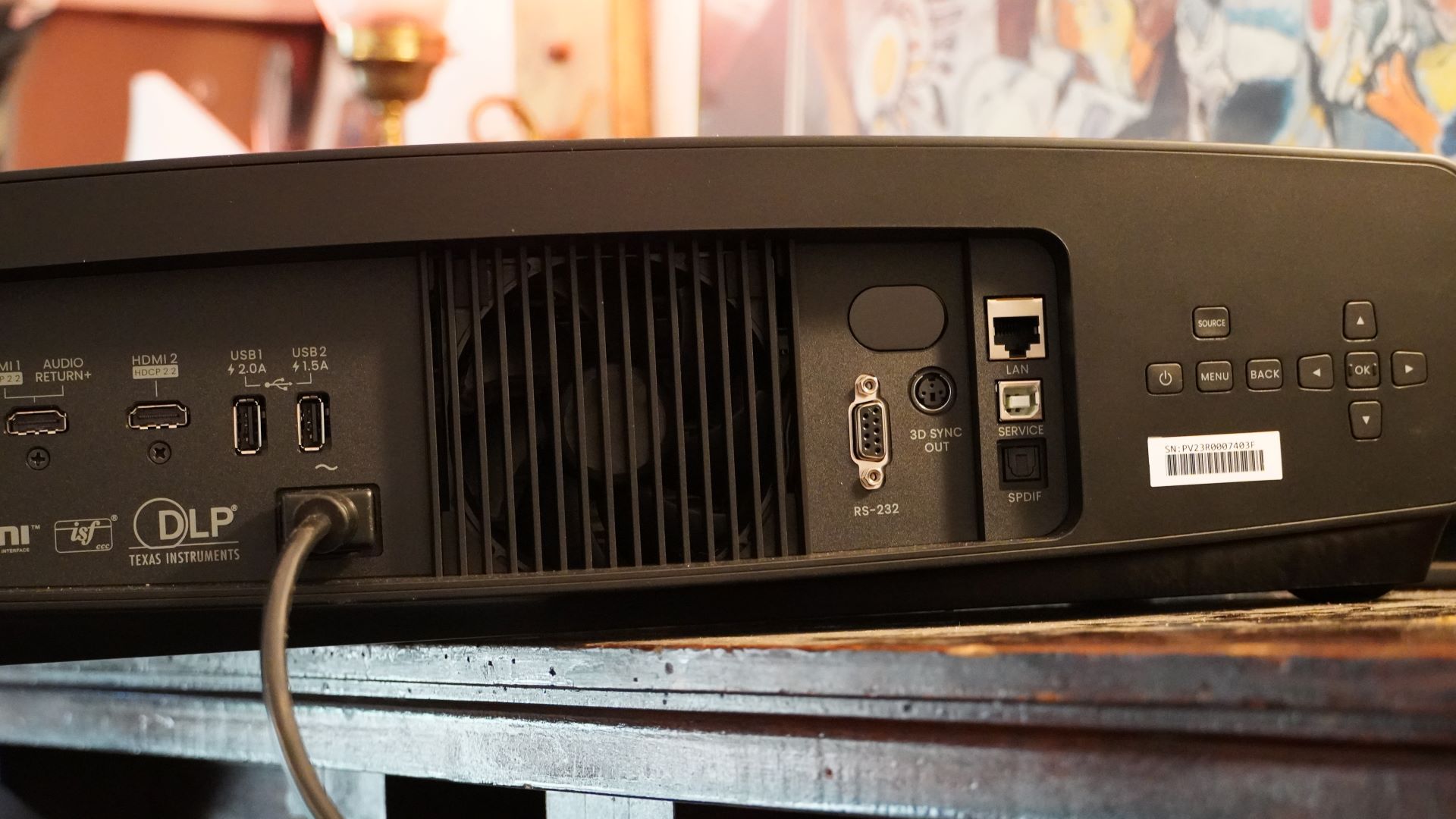
BenQ W5800 projector review: design and features
- Sizable, with a stylish design
- Lacks built-in sound and streaming
- Motorized zoom, focus and offset
The BenQ W5800 immediately lets you know it means business. It’s a large, regal projector, nearly every bit as large as the Epson Pro Cinema LS12000, with a symmetrical design and a massive lens sitting at the center. This is flanked by loads of air intakes and ventilation slots that occupy much of the surface area. The benefit here is that the projector’s cooling fans are low-pitched and practically inaudible from even just a couple of feet away.
Around back, the projector features a small handful of ports. For many, the two HDMI ports, one of which supports eARC, and the S/PDIF audio output will be doing most of the work. Two USB-A ports can power streaming devices, and there are LAN and RS-232 ports for more specialized setups. The projector’s 3D Sync Out port may come in handy, too, as it supports a variety of 3D formats.
For many, the W5800’s HDR support will be most crucial. You get the basic HDR10 and HLG, but BenQ also steps up with HDR10+ support. Dolby Vision isn’t supported, unfortunately.
The projector has some handy hardware for setup, with motorized control over zoom, focus, and horizontal and vertical offset. This allows you to shift the projection to perfectly fit your space, which is incredibly convenient. Keystone adjustments are digital, but they are thankfully less necessary because of the adjustable offset. All adjustments can be made with the included remote, which has a backlit keypad and convenient shortcuts to many settings in the projector’s menus. Several controls are also available directly on the projector.
Even with its conveniences, the BenQ W5800 lacks many that other popular projectors offer. There’s no smart TV operating system, so you’ll have to source media from a separate device, and there are no built-in speakers. The W5800 is not the complete solution that something like the BenQ X3100i is, and that can make it a tricky proposition for many more casual users.
- Design and features score: 3.5/5

BenQ W5800 projector review: picture quality
- Specified 100% DCI-P3 coverage, 2600 ANSI lumens brightness
- Highly adjustable 4K picture
- Excellent, natural motion processing
The BenQ W5800 is an excellent projector for home theater. It shines big and bright and readily adapts to a great many installation situations. It provides impressive color, though the occasional rainbow effect – a common artifact of the projector’s DLP imaging tech – can mar the viewing experience for those sensitive to it.
At the heart of the BenQ W5800 is a laser light source shining through a 0.47-inch DLP micromirror array, and this is responsible for the sharp, 4K visuals and 2600 ANSI lumens brightness. BenQ rates the projector for a full 100% coverage of the DCI-P3 color space, and I’ve seen little lack of color to make me doubt the rating. Animated programs like X-Men ‘97 benefit greatly from the wide color gamut, appearing thoroughly vibrant, but the same applies to just about any content.
Between its color and sharp 4K picture, the BenQ W5800 has a lot to work with, and it’s bright enough to look good in well-lit rooms and excel in dark ones. Shadows sink to a satisfyingly deep level, and they can maintain that depth alongside bright visuals elsewhere on the screen.
Thanks to the W5800’s hardware controls, it is exceedingly easy to get an image squared up perfectly onscreen with sharp detail from edge to edge. A long-throw projector like the W5800 is less sensitive to small surface imperfections and misalignment than short-throw and ultra-short-throw projectors. I noted a similar level of flexibility with the Epson LS12000, which is a long-throw projector the BenW W5800 competes with.
The BenQ W5800’s full DCI-P3 color space coverage gives it one critical edge over the Epson LS12000, which is rated only for 100% sRGB coverage. Of course, this still leaves room for improvement next to triple-laser projectors like the Hisense PX2-Pro, which is rated for 100% coverage of the even wider BT.2020 color space.
Nevertheless, the BenQ W5800 is a brilliant performer. It handles fast-motion content with aplomb and presents a colorful image that looks plenty vibrant. There are a few ways it could be even better, but it is nonetheless excellent.
- Picture quality score: 4.5/5

BenQ W5800 projector review: value
- Expensive for a projector that does one thing
- Performance and installation features help justify price
At $5,999 (£4,599 / AU$8999), the BenQ W5800 is expensive for a consumer-grade projector, though it’s less than half the price of the JVC DLA-NZ800, the premium pick in our best 4K projectors guide. Even so, that’s a lot of money to ask for a projector that only provides a display and nothing else.
The W5800 makes sense for the right audience. Its visuals are brilliant, and its flexible installation features provide a great picture with minimal fuss. Also, with many projectors that do feature built-in speakers and streaming platforms, those features often are just enough to make do, but not equal to their picture.
BenQ’s W5800 sits alongside the exceptional Epson LS12000, which is $1,000 cheaper while offering similar brightness and capabilities, including a 120Hz refresh rate option. If a long-throw projector isn’t a must, the Hisense PX2-Pro ultra short throw model is also a stunning system with admirable speakers and even more brilliant color at half the price. And if you aren’t too picky, you might find something like the $2,399 (around £1,900 / AU$3,690) BenQ X3100i to be more than good enough.
- Value score: 3/5
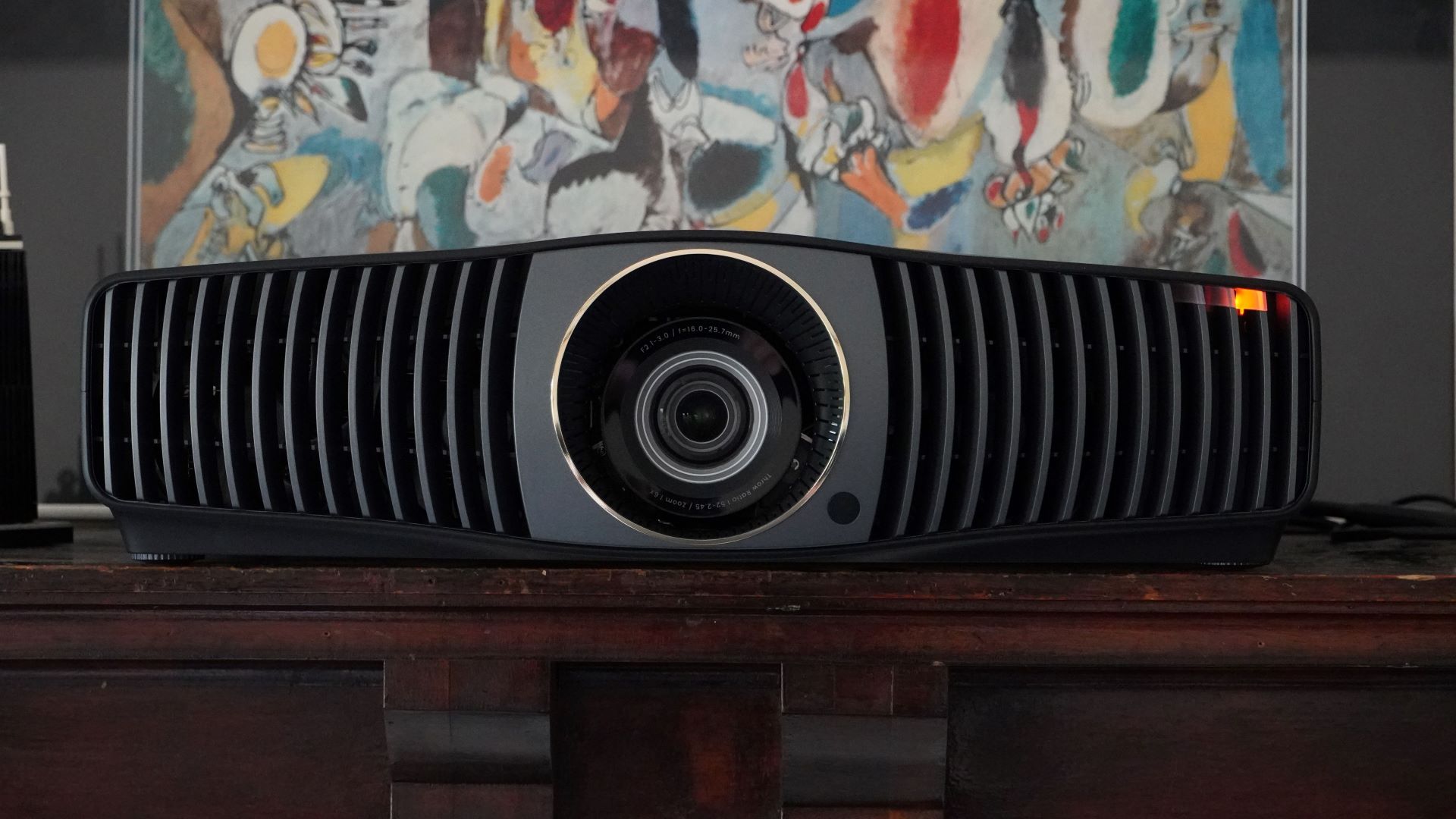
| Attributes | Notes | Rating |
|---|---|---|
| Design and features | An attractive, albeit large projector with helpful hardware adjustments, but lacks extra features like speakers and a smart TV platform for streaming | 3.5/5 |
| Picture quality | The laser DLP projection system provides colorful, bright, and crisp pictures from edge to edge, though black levels could still be lower | 4.5/5 |
| Value | At $6,000, the BenQ W5800 is expensive, even for a single-purpose projector that serves only as a display | 3/5 |
Should I buy the BenQ W5800 projector?
Buy it if...
You have a long-throw projector setup and are upgrading
The BenQ W5800 can serve as a brilliant upgrade. And its installation flexibility means you can drop into the place of another projector without requiring much adaptation.
You need just a killer display
The BenQ W5800 only handles visuals. It does a stunning job, but it needs an audio system and video sources to match. If you’ve already got that part of your setup squared away, it can serve as a great addition.
You want an extreme degree of picture control
The BenQ W5800’s in-depth controls let you extensively fine-tune image geometry and advanced picture settings. It also provides quick access to these settings, so you can easily dial the picture in as you see fit.
Don’t buy it if…
You’re not after the ultimate home theater
The BenQ W5800 is an expensive projector and only one element of a home theater system. Unless you’re planning to sink thousands into audio gear to match the visuals, there are much cheaper projectors that provide an all-in-one solution.
You want simplicity
The BenQ W5800 isn’t plug-and-play, and it requires consideration of other equipment you’re linking it to and wiring (after all, HDMI cables can only be so long). It’s far from a projector you can just plunk down anywhere and enjoy a movie with.
You’re looking for the best value
The BenQ W5800 looks great and can offer a lovely image from all sorts of placements. That said, many other projectors deliver great images for less money.
Also consider...
| Header Cell - Column 0 | BenQ W5800 | Epson Pro Cinema LS1200 | BenQ X3100i | Hisense PX2 Pro |
|---|---|---|---|---|
| Price: | $5,999 | $4,999 | $2,199 | $2,999 |
| Screen sizes supported: | Up to 200 inches | 50 to 130 inches | 60 to 200 inches | 90 to 130 inches |
| Brightness (specified): | 2,600 lumens | 2,700 lumens | 3,300 lumens | 2,400 lumens |
| HDR support | HDR10, HDR10+,HLG | HDR10, HLG | HDR10, HLG | Dolby Vision, HDR10, HLG |
| Display technology: | Laser, DLP | Laser, 3LCD | 4LED, DLP | 4LED, DLP |
| Smart TV: | N/A | N/A | Android TV | Android TV |
| Connections: | 2x HDMI (1 with eARC), S/PDIF | 2x HDMI 2.1 (1 with eARC), 1 x powered USB, optical digital audio output, | 3x HDMI 2.0 (1x eARC, 1x internal), optical digital audio out | 3x HDMI 2.0 (1 with eARC), S/PDIF, 3.5mm |
Epson Pro Cinema LS1200
The Epson LS1200 is our pick for the best projector for most people due to its powerful contrast, HDM1 2.1 ports, and reasonable price given the performance and features it delivers. It's a great alternative option to the more expensive BenQ 5800.
Here's our full Epson Pro Cinema LS1200 review.
BenQ X3100i
The BenQ X3100i is a gaming projector that also does an excellent job displaying movies. It lacks the long-throw capability of the W5800 and isn't as adept with handling HDR, but it's a significantly less expensive and more flexible projector option.
Here's our full BenQ X3100i review
Hisense PX2-Pro
The Hisense PX2-Pro is an ultra short throw projector designed to beam a big image from close up to a wall as opposed to from the longer distance the W5800 is capable of. It's less expensive and nearly as bright, and features both built-in speakers and the Android TV platform for streaming.
Here's our full Hisense PX2-Pro review
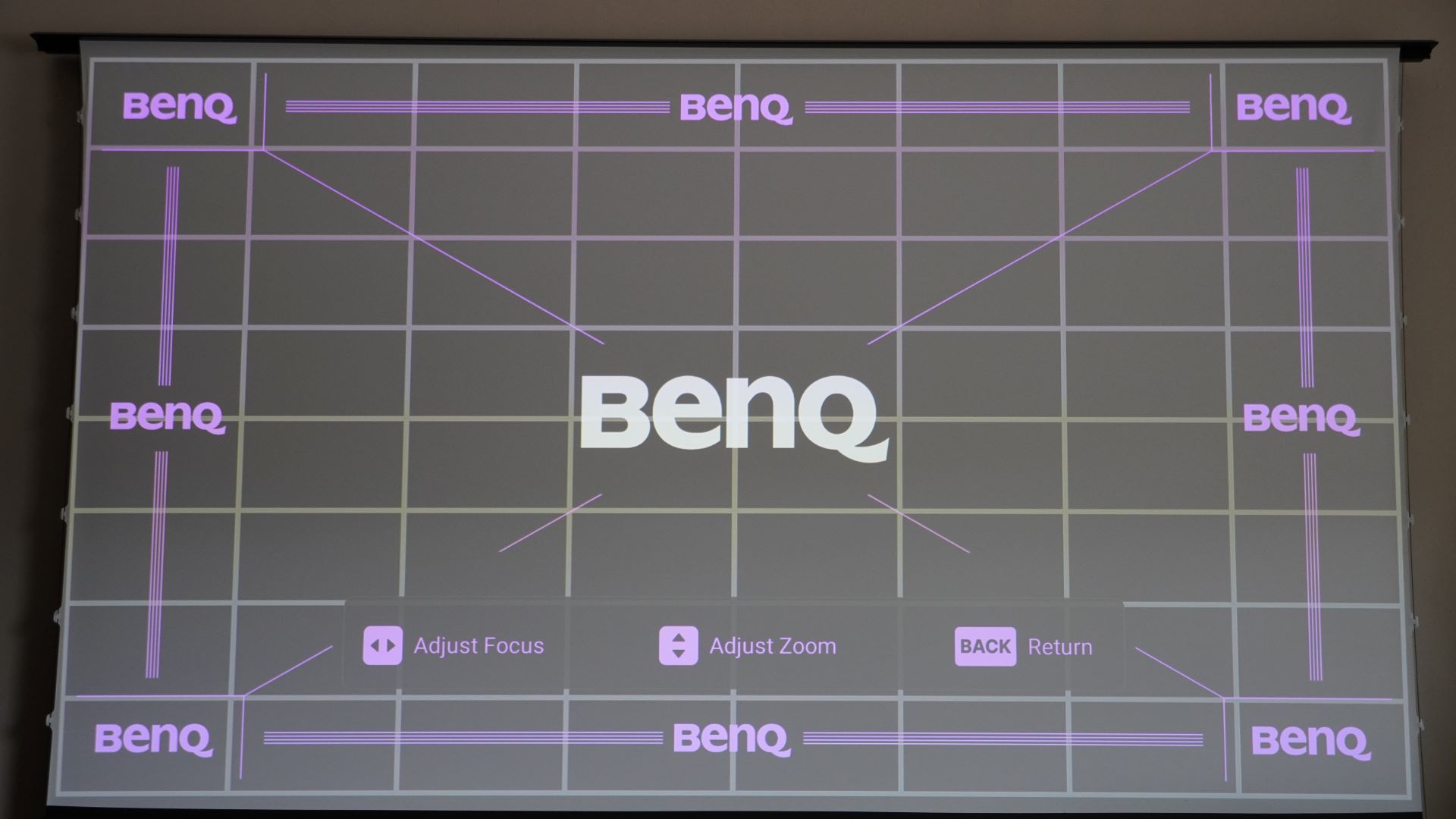
How I tested the BenQ W5800 projector
- Tested at home in multiple, real-world viewing conditions
- Presented with a variety of media and formats
- I have tested numerous projectors and displays over the last half-decade
I tested the BenQ W5800 at home, in real-world conditions. This saw it faced with ambient light coming in from numerous windows and in-room lighting as well as darkened conditions. The projector was tested both against a bare, white wall and an Akia Screens CineWhite screen. It was presented with both HDR and non-HDR streamed content.
My testing evaluates the projector’s performance with respect to its price and competition from other models that I and my colleagues at TechRadar have tested.
I have been testing projectors since 2021 and displays for even longer.
First reviewed: August 2024
Over the last several years, Mark has been tasked as a writer, an editor, and a manager, interacting with published content from all angles. He is intimately familiar with the editorial process from the inception of an article idea, through the iterative process, past publishing, and down the road into performance analysis.

